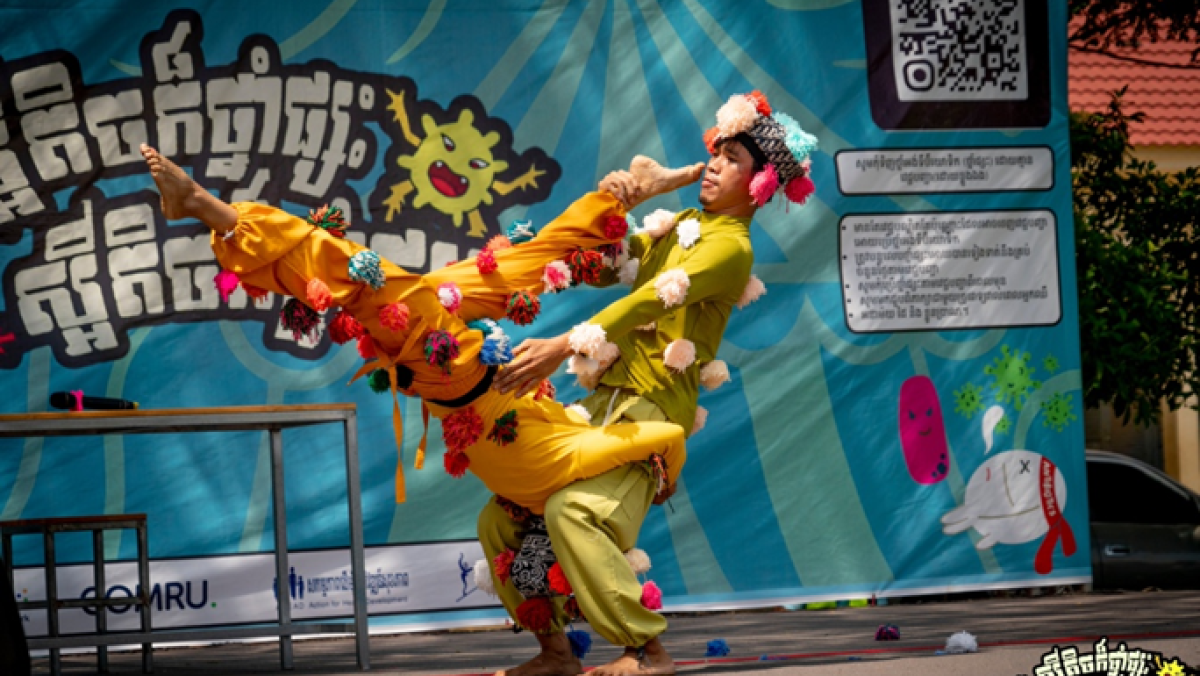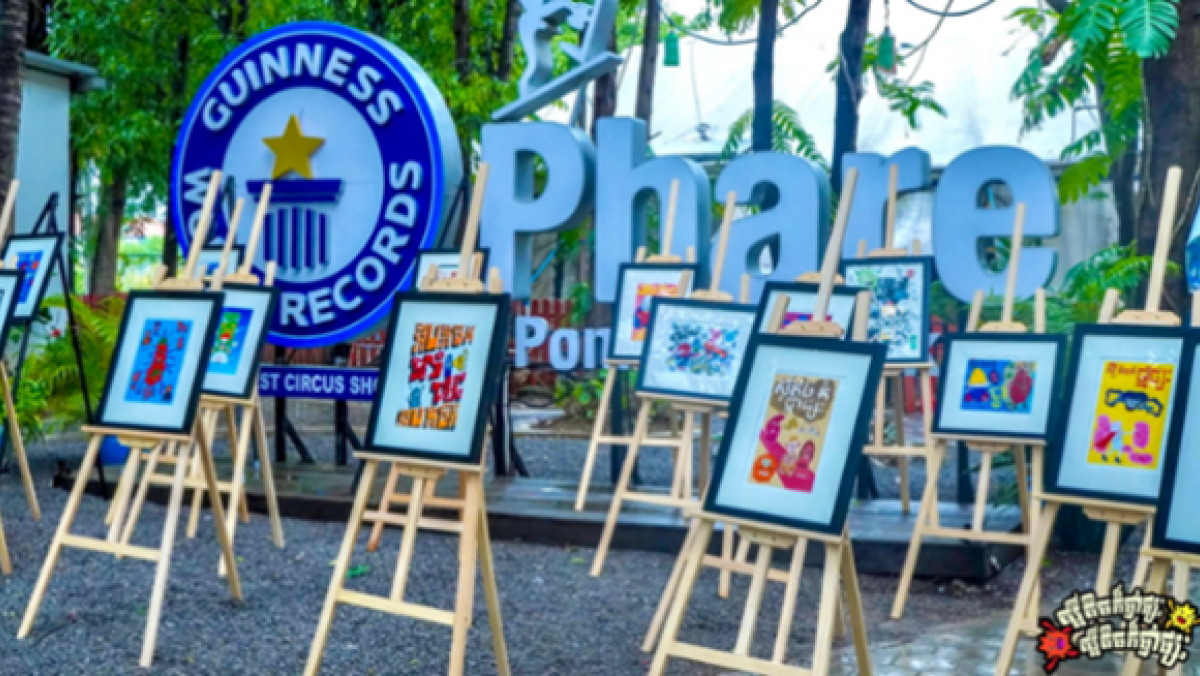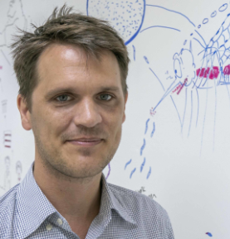The AMR Circus Project is a community-driven engagement campaign to raise awareness of antimicrobial resistance (AMR). The campaign has reached over half a million people in Cambodia through the use of performance arts, visual arts, and social media.

Circus performers on stage to raise awareness of AMR
Photo credits: Nicky Almasy
The campaign was co-created by the Cambodian Ministry of Health, Mahidol Oxford Tropical Medicine Research Unit (MORU) and the Cambodia-Oxford Medical Research Unit (COMRU), in partnership with a non-profit arts school Phare Ponleu Selpak, and local health departments and the Siem Pang-based youth advisory group on health and research engagement.
Across four live shows in Siem Reap and Battambang, circus performers used humour, acrobatics, and familiar social scenarios to bring to life common misconceptions about antibiotics, such as using antibiotics for viral illnesses and receiving unlabelled mixed medicines. The highlight of the performance showed a symbolic battle between an antibiotic and resistant bacterium, followed by a health professional character who talked about good antibiotic practices.
Performances were supported by a range of visual and print materials, including brochures, posters and watercolour artworks made by young artists. To extend the project’s reach beyond live audiences, circus performers featured on social media videos highlighting the dangers of antibiotic misuse. These videos have been viewed over half a million times. A short documentary was also produced to capture and visualize the entire project
AMR has claimed an estimated 3,000 lives a year in Cambodia since 1990, however awareness of AMR remains low. The project highlights the power of an accessible community approach to address this health challenge.
In Cambodia, antibiotics are sold almost everywhere-at pharmacies, grocery stalls, and often in unlabelled bags. Taking them for common ailments has become a cultural norm, passed down through generations and reinforced by community suggestions.
That’s why co-creation was so important: from the script to the logos and videos, making sure local partners shaped the project in their own way was crucial to effectively engage the public.
The circus performers and visual artists drew on experiences they knew well, which made the stories resonate even more with the audience, and with themselves. As a result, many said they learned a lot and felt eager to bring that knowledge back to their families and communities.


Visual and print materials, posters and watercolour artworks made by young artists
Photo credits: Nicky Almasy
When we combine research with creative community engagement, we can break through traditional barriers to health education. What we found encouraging was how effectively the circus performances conveyed complex concepts about antibiotic resistance to young audiences who are often difficult to reach through conventional health messaging.

The project has been evaluated through interviews and focus group discussions with various community members and performers.
A research paper is currently being developed to share findings on the project’s impact and how creative, co-designed performances can influence perceptions of antibiotic use and AMR in Cambodia.
